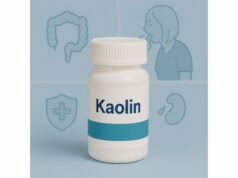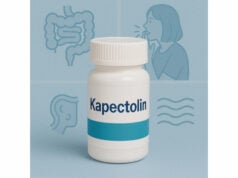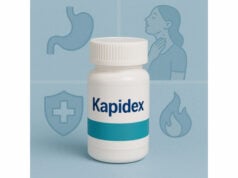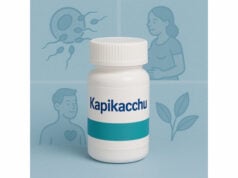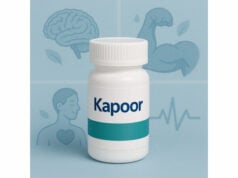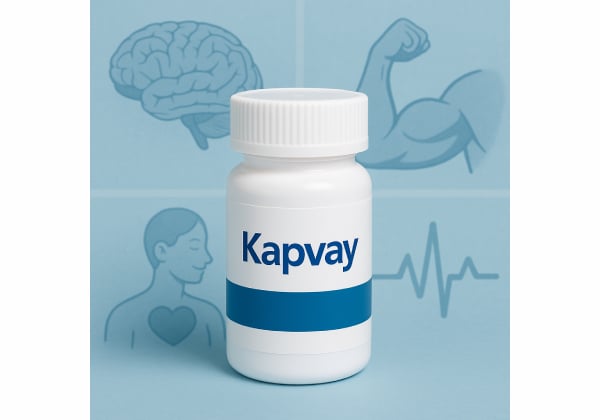
Kapvay is the extended-release tablet form of clonidine, a selective alpha-2 adrenergic agonist used to manage symptoms of attention-deficit/hyperactivity disorder (ADHD) in children and adolescents. Unlike stimulants, Kapvay does not increase dopamine or norepinephrine release. Instead, it quiets overactive signaling in the prefrontal cortex and brainstem by stimulating inhibitory alpha-2A receptors. In practice, that can translate to better evening behavior, smoother mornings, improved sleep onset, and steadier attention—especially in children who are anxious, hyperactive, or sensitive to stimulant side effects. Kapvay can be prescribed alone or alongside stimulant medication to target residual symptoms such as impulsivity, aggression, or insomnia. Because it lowers sympathetic tone, safety hinges on slow titration, routine pulse and blood pressure checks, and a careful taper to avoid rebound hypertension. This guide explains how Kapvay works, who benefits most, how to start and adjust the dose, how to combine it thoughtfully with other ADHD therapies, and what risks and interactions to watch for so families and clinicians can make informed, confident decisions.
Key Takeaways
- Reduces hyperactivity, impulsivity, aggression, and sleep-onset problems; helpful as monotherapy or with a stimulant.
- Typical range: 0.2–0.4 mg/day in two doses (larger dose at bedtime); titrate by 0.1 mg/day at weekly intervals.
- Safety caveat: taper by ≤0.1 mg every 3–7 days to prevent rebound hypertension; monitor pulse and blood pressure.
- Avoid or use specialist guidance in children under 6 years, those with syncope, significant heart disease, or on other sedatives.
Table of Contents
- What is Kapvay and how it works
- Benefits: what symptoms it helps
- How to take Kapvay correctly
- Dosage, titration, and tapering
- Safety: who should avoid and interactions
- Evidence at a glance and FAQs
What is Kapvay and how it works
The basics. Kapvay is clonidine extended-release (ER) in 0.1 mg and 0.2 mg scored tablets formulated for twice-daily dosing. It is approved for ADHD treatment as monotherapy or adjunct to stimulants in pediatric patients (most commonly ages 6–17). It is not simply a “long-acting blood pressure pill”—the ER profile and pediatric ADHD indication distinguish it from immediate-release clonidine and transdermal clonidine patches used for hypertension.
Mechanism in plain language. Clonidine stimulates alpha-2A receptors on presynaptic neurons in the locus coeruleus and prefrontal cortex. When these receptors are activated, they reduce norepinephrine release and dampen “noise” in attention and arousal circuits. Many children experience:
- Less hyperactivity and impulsivity: fewer outbursts, better inhibition, less motor restlessness.
- Improved sleep onset: especially when the evening dose is larger than the morning dose.
- Reduced tics or aggression: in children where arousal and irritability are prominent.
What Kapvay can complement. Stimulants remain first-line for many school-aged children. Kapvay is often added when:
- A stimulant improves focus but wears off in the late afternoon/evening.
- Insomnia, jitteriness, or appetite loss from stimulants need counter-balancing.
- Tics, aggression, self-regulation, or morning routine problems persist.
- Anxiety or emotional lability is present and a non-stimulant start is preferred.
How the ER formulation helps. Extended-release clonidine minimizes peak-trough swings, allowing a smoother day and sleep benefits without repeated mid-day dosing. Tablets must be swallowed whole; crushing or chewing defeats the release profile and can cause excessive sedation or hypotension.
What Kapvay is not. It is not a sedative to “knock kids out.” If sedation is the only effect, the dose or timing is likely off. It also does not treat learning disabilities or mood disorders by itself; those require targeted therapies.
Benefits: what symptoms it helps
Core ADHD symptoms. In randomized and add-on trials, extended-release clonidine reduces hyperactivity/impulsivity and oppositional behaviors, with moderate effects on inattention. Many families observe better behavioral compliance in the morning routine and during evening homework when other medications have worn off.
Sleep-onset benefits. Difficulty falling asleep is common in ADHD—often due to physiologic hyperarousal or stimulant timing. With the larger dose at bedtime, Kapvay can shorten sleep latency and reduce nighttime restlessness. If a child falls asleep but seems groggy in the morning, shifting a small portion of the dose to the morning or reducing the bedtime amount usually helps.
Adjunct to stimulants. For partial stimulant responders, Kapvay adds:
- Impulse control and emotional regulation in the late afternoon.
- A bridge through homework and dinner.
- Lower stimulant dose requirements in some patients, easing appetite or mood side effects.
Tics and irritability. Alpha-2 agonists such as clonidine can reduce motor/vocal tics and irritability, particularly when tics are exacerbated by stimulants or stress. While not a tic disorder cure, Kapvay is frequently chosen when ADHD and tics coexist.
Anxiety-sensitive profiles. In children where anxious hyperarousal drives meltdowns and somatic symptoms, Kapvay’s sympathetic dampening often improves body calm (less racing heart, shaky hands), which can support CBT skills and school functioning.
Classroom and home impact examples.
- Elementary school: fewer calls out, less leaving seat, smoother transitions between activities.
- Middle school: improved organization in the evening, fewer homework battles, better bedtime routine.
- Home/community: reduced oppositional episodes in stimulating environments (sports practice, shopping).
What to expect and when. Some families notice calmer evenings within 3–7 days at the starting dose. Full benefits usually emerge over 2–4 weeks as doses are adjusted and routines stabilize. If there’s no functional change after a methodical titration (and behavior supports are in place), revisit the treatment plan rather than escalating indefinitely.
How to take Kapvay correctly
Before starting: a quick checklist
- Confirm ADHD diagnosis and coexisting conditions (anxiety, learning disorders, sleep apnea, tics).
- Review baseline vitals (heart rate, blood pressure) and any history of syncope, congenital heart disease, or arrhythmia.
- List all medications/supplements, especially sedatives, antihypertensives, and substances that can lower heart rate.
Starting steps (typical pediatric plan)
- Begin with 0.1 mg at bedtime to gauge sedation and blood pressure effects.
- After one week, add 0.1 mg each morning if tolerated and if evening-only dosing isn’t sufficient.
- If symptoms persist, increase by 0.1 mg/day at weekly intervals, dividing morning/bedtime (bedtime often equal or higher).
- Reassess in 2–4 weeks: target outcomes include calmer evenings, less impulsivity, and easier sleep onset.
Administration tips
- Swallow whole with water; do not crush, chea, or split unevenly.
- Take with or without food; a light snack can reduce nausea.
- If a dose is missed, skip it and take the next scheduled dose. Do not double up the same day.
Combining with stimulants
- When added to methylphenidate or amphetamine, keep stimulant timing early in the day.
- Use Kapvay to cover afternoons/evenings and improve sleep.
- Review appetite, mood, and tics weekly during combination therapy.
School coordination
- Document the dosing plan in the school health record.
- Alert staff about possible initial sleepiness; this usually fades with dose optimization.
- Emphasize that Kapvay is not a PRN (as-needed) medicine; consistency matters.
Lifestyle supports that enhance results
- Sleep hygiene: fixed bedtime/wake time, screens off 60 minutes before bed.
- Behavioral strategies: visual schedules, token systems, teacher feedback loops.
- Nutrition: protein-containing breakfast and dinner to stabilize energy and mood.
When to call the prescriber
- Lightheadedness, fainting, or persistent low energy after dose increases.
- Resting heart rate consistently below age-appropriate norms or symptomatic hypotension.
- Irritability or mood worsening that does not resolve after timing adjustments.
Dosage, titration, and tapering
Typical dose range (children/adolescents)
- Starting dose: 0.1 mg at bedtime.
- Usual titration: increase by 0.1 mg/day at weekly intervals based on response and tolerability.
- Administration schedule: twice daily (morning and bedtime), with the larger portion at bedtime in many cases.
- Typical effective total daily dose: 0.2–0.4 mg/day.
- Maximum studied total daily dose: 0.4 mg/day (divided).
Personalizing the split
- 0.1 mg AM / 0.1–0.2 mg HS is common once you reach 0.2–0.3 mg/day.
- If daytime sleepiness occurs, lower the morning dose and keep the bedtime dose steady.
- For early-morning impulsivity, modestly increase the morning portion while watching for sedation.
Renal considerations
- Clonidine is partly renally cleared. In renal impairment, start low, titrate slower, and monitor vitals closely; consult nephrology for significant impairment.
Discontinuation and gaps
- Never stop abruptly. Taper by no more than 0.1 mg every 3–7 days to prevent rebound hypertension, tachycardia, headache, or agitation.
- If multiple doses are missed, contact your prescriber to restart at a lower level and re-titrate rather than resuming the full dose.
Practical titration timeline (example)
- Week 1: 0.1 mg HS → focus on sleep onset and morning wakefulness.
- Week 2: 0.1 mg AM + 0.1 mg HS → observe afternoon behavior and school feedback.
- Week 3: 0.1 mg AM + 0.2 mg HS → address evening homework and dinner routines.
- Week 4: fine-tune ±0.1 mg/day if needed, within 0.2–0.4 mg/day.
Measuring success
- Track 3–5 daily moments that used to be difficult (e.g., getting dressed, homework start, bedtime). Rate each 0–10.
- Look for ≥30–50% improvement over 2–4 weeks. If not seen, reassess diagnosis, comorbidities, or consider alternative/non-stimulant options (e.g., guanfacine ER or viloxazine ER) with your clinician.
Safety: who should avoid and interactions
Common side effects
- Somnolence/fatigue (often transient with dose timing tweaks).
- Dry mouth, headache, dizziness, constipation, irritability, or nightmares.
- Orthostatic symptoms (lightheadedness when standing quickly).
Less common but important
- Hypotension, bradycardia, or syncope—risk rises with dehydration, illness, or hot environments.
- Rebound hypertension if stopped suddenly or doses are missed for several days.
- Depressed mood or behavioral activation in a minority of patients.
Who should avoid or use only with specialist oversight
- Children under 6 years (safety/efficacy not established for ADHD).
- Known conduction disease, prior unexplained syncope, or significant structural heart disease—cardiology input advised.
- Severe renal impairment—dose adjustments and closer monitoring needed.
- Pregnancy/breastfeeding in adolescent patients—discuss risks/benefits; clonidine transfers into breast milk.
- History of severe drug reactions to clonidine.
Drug and substance interactions
- CNS depressants (benzodiazepines, opioids, sedating antihistamines): additive sedation; avoid new sedatives during titration.
- Other antihypertensives or alpha-blockers: may potentiate hypotension; coordinate with prescribers.
- Stimulants: commonly co-prescribed; monitor appetite, tics, and sleep as doses adjust.
- Alcohol and cannabis: can magnify dizziness and sedation; discourage use in adolescents.
Everyday safety practices
- Stand up slowly; hydrate well, especially in hot weather or during sports.
- Take doses at consistent times; set phone reminders.
- Keep tablets out of reach of younger siblings; the ER tablets look like standard pills but can cause harm if ingested accidentally.
Red-flag symptoms—seek care urgently
- Fainting, resting heart rate that seems unusually low with symptoms, chest pain, shortness of breath, or severe headache after missed doses.
- Allergic reaction: hives, facial swelling, wheeze.
Evidence at a glance and FAQs
What does the research show?
Placebo-controlled trials demonstrate that clonidine ER improves hyperactivity/impulsivity scores and can reduce oppositional symptoms as monotherapy. As an add-on to stimulants, clonidine ER provides additional symptom reduction and helps with sleep onset and evening behavior. Clinical guidelines include alpha-2 agonists as evidence-supported non-stimulant options for school-aged children, either alone or combined with stimulants, with an emphasis on careful titration and monitoring.
Kapvay vs. guanfacine ER (another alpha-2 agonist)
Both are alpha-2 agonists. Kapvay (clonidine ER) tends to be more sedating and may have stronger effects on sleep and hyperarousal, while guanfacine ER may produce less sedation for some and can have a slightly different side-effect profile (more hypotension/dizziness in some comparisons). Choice often depends on sleep needs, daytime sedation tolerance, tic profile, and prior stimulant response.
How long should we keep using Kapvay?
Reassess every 3–6 months. If behavior therapy, school supports, and medication have stabilized function, consider a planned taper during a lower-stress period (e.g., summer) to test ongoing need—taper slowly to avoid rebound.
Can Kapvay help with tics?
It can reduce tic severity in many children and is often preferred when ADHD and tics coexist. If tics persist or worsen, revisit stimulant timing, stress management, and consider targeted tic treatments.
Will it stunt growth or weight?
Kapvay generally does not suppress growth or appetite like some stimulants; mild weight gain can occur in a subset due to reduced hyperactivity or bedtime snacking. Track height/weight on growth charts at each visit.
What if mornings are still rough?
Shift a small portion of the dose to morning, add a morning routine plan (structured steps with visual cues), and review stimulant timing if one is used.
What if my child refuses pills?
Because Kapvay ER tablets must be swallowed whole, pill-swallowing training helps. If swallowing is not feasible, discuss alternate non-stimulants that come in other forms with your clinician.
How do we prepare for sports or hot weather?
Encourage hydration, avoid rapid position changes, and monitor for lightheadedness; consider small timing adjustments on heavy practice days after discussing with the prescriber.
References
- KAPVAY – clonidine hydrochloride tablet, extended release (2023) (Label)
- KAPVAY (clonidine hydrochloride) extended-release tablets, for oral use (2020) (Label)
- The Role of Alpha-2 Agonists for Attention Deficit Hyperactivity Disorder in Children: A Review (2023) (Systematic Review)
- Treatment of ADHD: Drugs, psychological therapies, devices, complementary and emerging approaches (2022) (Review)
- Clinical Practice Guideline for the Diagnosis, Evaluation, and Treatment of Attention-Deficit/Hyperactivity Disorder in Children and Adolescents (2019) (Guideline)
Medical Disclaimer
This article is for educational purposes only and is not a substitute for personalized medical advice, diagnosis, or treatment. Medication choices and doses for ADHD should be made with a licensed clinician who can assess coexisting conditions, review other medicines, and monitor heart rate and blood pressure. Never stop Kapvay suddenly; taper under medical supervision. Seek urgent care for fainting, chest pain, severe headache after missed doses, trouble breathing, facial swelling, or hives.
If this guide was helpful, please consider sharing it on Facebook, X (formerly Twitter), or your preferred platform, and follow us for more evidence-informed medication guides. Your support helps us continue creating high-quality, people-first resources.

